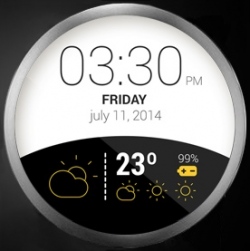
A team at the University of Washington, has developed what it’s calling a ‘power over Wi-Fi’ system that can recharge batteries through the air, from up to 28 feet away. The system comprises just two components; an access point (a router), and custom-built sensors.
“The goal of the sensors is to harvest RF (radio frequency) power and convert it into DC power,” explains Vamsi Talla, a researcher on the project. “The second piece, the access point, there we actually developed a custom solution on it, just a software modification that would enable the access point to act both as a good power delivery source and, simultaneously, also as a good Wi-Fi router.” In other words, it achieves power over Wi-Fi in a way that both works with pre-existing hardware, and doesn’t interfere with your Internet connection one bit.
Those are two important distinctions. Energous already sells a device that transmits power through the air through RF signals. It requires entirely new, dedicated hardware, though, and loses the Wi-Fi aspect. The UW research, meanwhile, can coexist with traditional Wi-Fi routers, pushing both data and energy simultaneously. Or, more accurately, efficiently harnessing the energy that your router already puts out.
As for Wi-Fi interference, there’s a hard cap on how much output of any kind your router can manage at once, sort of like how putting more ketchup on a hot dog leaves less room for mustard. But the UW team came up with a clever workaround to make sure neither charging nor connectivity goes sideways.
“If we wanted to just blast as much power as we possibly can, that would kill your Wi-Fi, because you’d have power on the channel all the time,” explains Bryce Kellogg, another researcher on the project. “We optimized the router so that we can deliver what seems like, to the sensor, constant power without impacting your Wi-Fi too much. Instead of having continuous power on one of your Wi-Fi channels, we split it among your three non-overlapping Wi-Fi channels. That allows us to deliver about the same amount of power without impacting any one channel very much.”
The team has already tested this out with temperature sensors, a camera, and rechargeable batteries, powering all from ranges of 20 feet, 17 feet, and 28 feet, respectively. If those applications seem a little small-fry, don’t blame them. Blame the FCC, which has imposed a one-watt limit on router power output, for reasons that are mysterious to Talla and company. Should those restrictions loosen, you could start to see far more robust applications.
